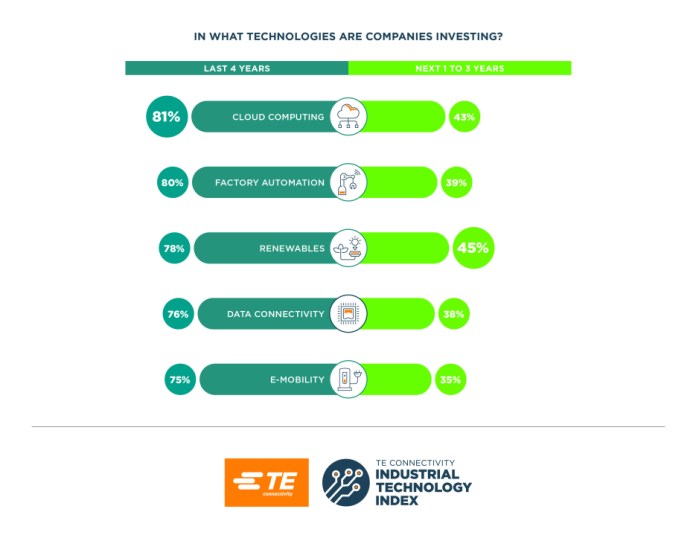TE Connectivity’s inaugural Industrial Technology Index, a global survey of how companies innovate, finds that engineers and executives approach innovation differently, including how to define and achieve innovation. This makes it more difficult for companies to achieve success, said TE.
The survey of 300 design engineers and 150 industry executives in the U.S., Germany and China, across a variety of industries ranging from wireless and cloud computing to industrial and automotive, finds that companies face several roadblocks that hinder their innovation. These include “misaligned perspectives on innovation between engineers and executives, difficulties developing the skills needed to incorporate new technologies into their businesses and a lack of structure to support collaboration and knowledge sharing.”
The challenges start at how they define innovation, said TE. Fifty-seven percent of executives said innovation is a total transformation, compared with 45% of engineers. Also, nearly half of the engineers said their organization’s goals for innovation are unrealistic and that they struggle to meet them, compared with 34% of executives.
Despite the disparity in perspectives, innovation is important to both engineers and executives. Ninety percent of executives and 88% of engineers rank innovation as their company’s top priority. The majority of respondents also believe that their companies have a clearly defined strategy for meeting their goals and the resources to improve products, processes or business models.
Over the next one to three years, more than 80% of respondents expect to increase investments in new design processes, existing lab upgrades, employee training and hiring new talent, while three-quarters or more expect additional investments to build new labs, foster cross-collaboration within their organization and encourage external partnerships.
The key areas of technology investment include cloud computing (81%), factory automation (80%), renewable energy (78%) and data connectivity (76%). The report also finds that investment priorities over the next one to three years are renewable energy and cloud computing, with 45% of companies prioritizing renewables.

Investment priorities over the next one to three years include renewable energy and cloud computing, with 45% of companies prioritizing renewables. (Source: TE Connectivity)
However, only 53% of executives think their companies need to fund innovation more to meet their goals, compared with 83% of engineers who believe greater funding is needed.
A red flag, said TE, is the potential misalignment between engineers and executives on the importance of sustainable innovation. One in five engineers said their companies do not have a clear strategy for implementing sustainable practices. This is in comparison with executives who are 5× more likely to think sustainability is not important to their organization.
The survey also finds that 47% of engineers think fear is a factor in slowing down innovation, and more so in the automobile/commercial transportation industry, where 86% of engineers report fear around innovation. TE said it is “likely due to the rapid pace of change and high stakes related to vehicle electrification.” The majority of engineers (82%) believe external consultants can accelerate innovation, while only 69% of executives agree.
The report provides several key takeaways to help companies improve their innovation strategies. These focus on aligning engineers and executives on priorities to better position their companies to achieve success.
Advertisement
Learn more about TE Connectivity






